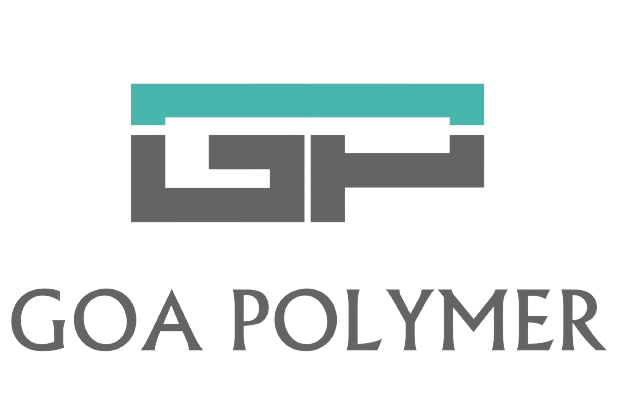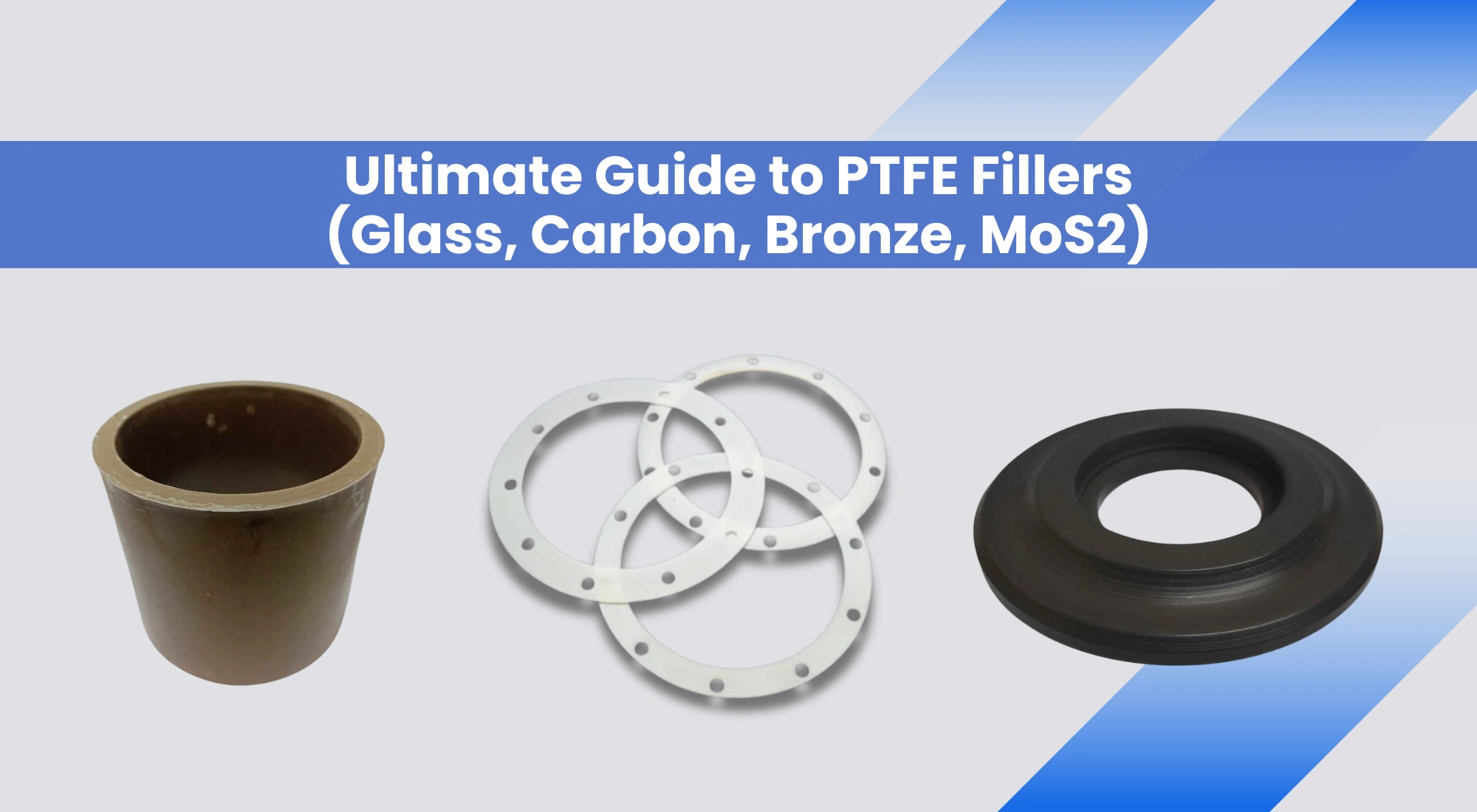PTFE is a strong plastic that has non-stick properties. Adding small solid materials called fillers to PTFE changes its properties. People know PTFE for its smoothness, non-stick nature, and durability. Pure PTFE can be soft and wear out fast under high load.
Adding fillers like glass, carbon, bronze, and MoS2 boosts strength and performance. These fillers change PTFE’s properties, improving its performance in various conditions. PTFE can handle high pressure and is frictionless. It resists wear and lasts longer, especially with the right filler.
In this blog, we’ll share an ultimate guide to PTFE fillers. We’ll help you choose the right one for your needs.
What are PTFE Fillers and Their Key Properties
PTFE stands for polytetrafluoroethylene. It is a non-stick plastic that offers high resistance. Pure PTFE is soft and easy to wear. However, it can break under heavy loads. So, manufacturers add fillers to make it stronger. Fillers help PTFE handle higher loads.
They also reduce friction and manage wear. In several scenarios, filled PTFE still retains excellent chemical resistance and electrical insulation. The significant characteristics of PTFE are as follows:
- Superb chemical resistance (does not react at all).
- Superior weather and UV resistance
- Non-toxic and safe for food and medical applications.
- Corrosion and wear resistance
- Lasting and durable in harsh environments.
Common Types of PTFE Fillers and Benefits
To enhance the strength and wear resistance of PTFE, we incorporate various fillers. The team modifies the actual material according to the application requirements. The following are the PTFE fillers most commonly used in the industry:
1. Glass Fiber
Manufacturers make glass fibre by adding tiny glass fibers or spheres to virgin PTFE. This filling boosts the material’s strength, rigidity, and stability. It helps the material keep its shape under heat or pressure. It prevents the material from becoming less dense as the years pass. Glass-filler material is best for seals,
PTFE gaskets,
PTFE Valve Seats, and structural parts. These areas need strength and stability.
2. Carbon Filler
The carbon filler in PTFE has carbon or graphite particles mixed with the PTFE material. This filler provides a main benefit because it decreases friction while enhancing wear resistance. This helps extend the life of parts in sliding applications. Also, it lets PTFE function in dry conditions without needing extra lubrication.
The ability of carbon-filled PTFE to conduct electricity can be improved a bit. The selection of carbon material determines the outcome of this process. Bearings, bushings, and other moving parts are made from this material. It ensures smooth operation and low degradation. Both are vital for its performance.
3. Bronze Filler
To get bronze fillers PTFE, you add tiny bronze particles to PTFE. One advantage of using bronze as a filler is that it boosts toughness. The process improves heat resistance in plastics and sometimes boosts their electrical conductivity.
Bronze-filled works best when metal surfaces touch PTFE parts. It also offers better protection against wear. It can handle high heat and pressure while remaining strong and durable. The metal presence remains strong. Its chemical resistance is a key feature of PTFE.
4. MoS2 (Molybdenum Disulfide) Filler
MoS2 filler PTFE means PTFE that contains molybdenum disulfide. Someone mixes this solid lubricant in. The filler reduces friction effectively and protects against material wear. The system lets parts move freely and smoothly.
It does this by removing the need for lubricants. The material functions effectively in situations where lubrication is restricted or completely forbidden. MoS2-filled PTFE has several key benefits:
- MoS2 filler offers strong chemical resistance.
- MoS2 filler can handle moderate temperatures.
- MoS2 filler can support various loads with great efficiency.
Wear strips, slide plates, bearings, and other moving parts often include these standard components. These components demand minimal friction levels, along with extended operational durability.
How to Select the Right PTFE Filler for Your Application
Choosing the right PTFE filler depends on your specific needs. Here are some simple rules to help you decide:
- Check Sliding and Friction Needs: Check the requirements for sliding and friction in your application. Select a filler material that decreases friction while enabling smooth movement of components. Carbon and MoS2-filled PTFE are ideal for applications needing smooth sliding or no lubrication.
- Identify Application Requirements: Analyze the operational environment of your component to establish its needs. Check the operational conditions, including:
- Weight capacity
- Temperature range
- Chemical resistance requirements
- Electrical attributes
- Cost Considerations: Check the total material cost thoroughly. This includes its lifespan and care needs. Filled PTFE may have a higher initial cost. However, it often lowers replacement and maintenance needs later.
- Check Chemical Resistance: Make sure the PTFE filler can handle chemical exposure for your needs. The chemical resistance of PTFE remains intact because fillers do not modify its characteristics. The test must be conducted in extreme conditions to achieve optimal results.
- Determine Electrical Requirements: Decide if the section should be a conductor or an insulator. The selection of carbon or bronze fillers determines the level of electrical conductivity. The insulation properties stay strong when PTFE is filled with glass or MoS2.
- Consult Experts: Talk to material engineers or suppliers. These experts will help you select the right PTFE filler that satisfies your performance requirements, safety standards, and application needs.
Conclusion
PTFE fillers are crucial in enhancing the performance and longevity of PTFE components. The fillers include glass, carbon, bronze, and MoS2. They each offer unique benefits. The advantages serve various purposes. Glass-filled PTFE delivers both strength and stability to the material.
Carbon and MoS2 handle friction and wear. Bronze adds two key qualities to the alloy: strength and heat conductivity. The process of selecting a filler material requires intricate decision-making. Testing samples in their actual operating environment produces the most accurate test results.
Choosing the right PTFE filler helps you make components that last longer. It performs better and needs less maintenance. It can handle tough conditions. Your products achieve improved reliability and cost-effectiveness through the process.
Frequently Asked Questions
Yes, glass and MoS2-filled PTFE are still insulating. On the other hand, carbon or bronze fillers might make the material slightly conductive.
Yes, glass and bronze-filled PTFE can tolerate high temperatures while keeping their strength and shape.
Lubrication requirements can be lessened or totally eliminated with the use of some fillers such as MoS2 and carbon, thus making maintenance more convenient.
Yes, if the material is not too thick. However, glass and bronze fillers can make it more difficult. For clean results, proper tools and speeds must be used.



